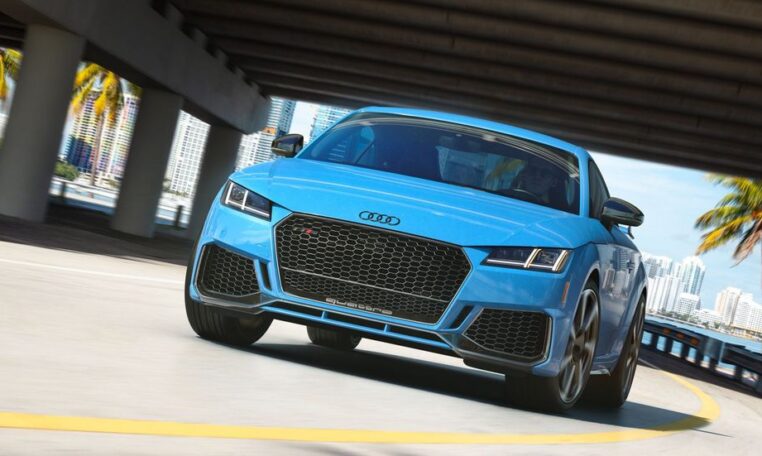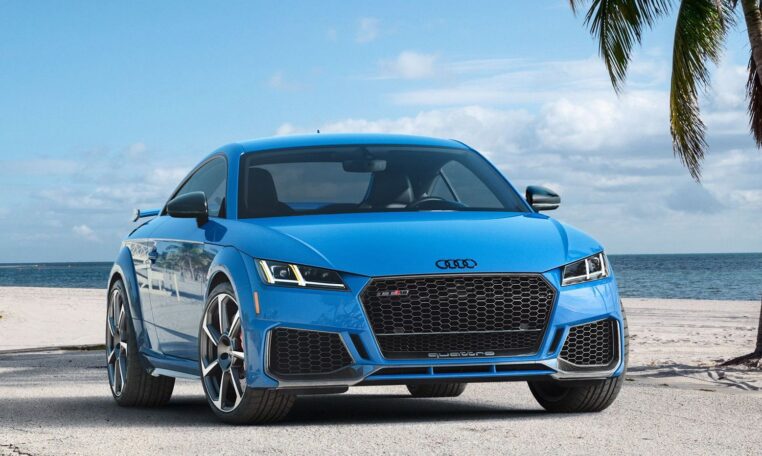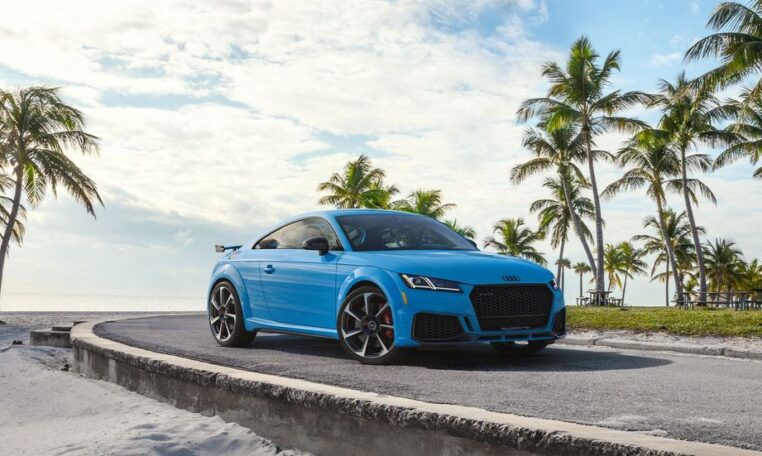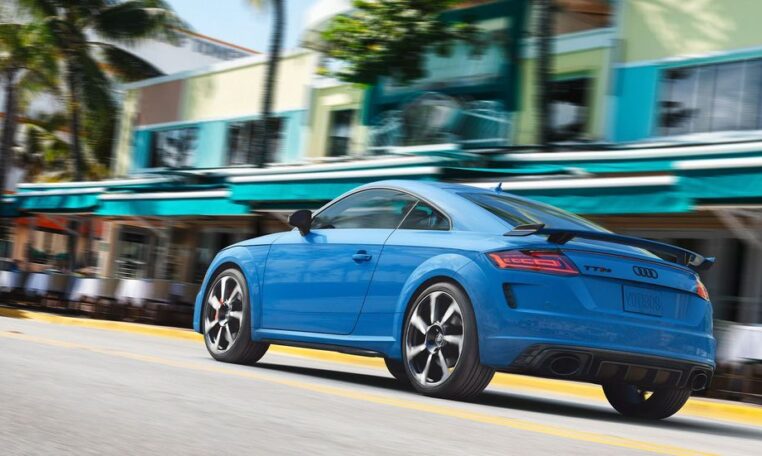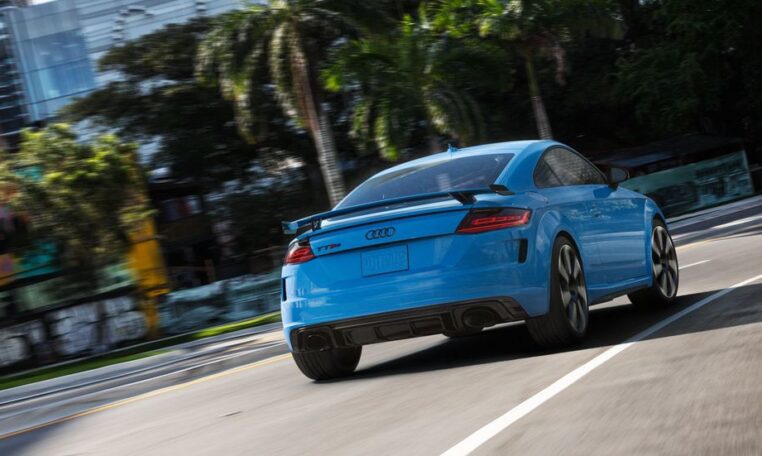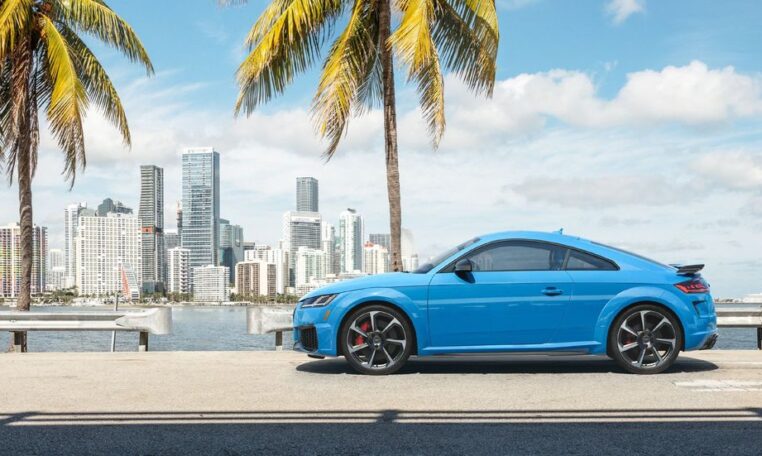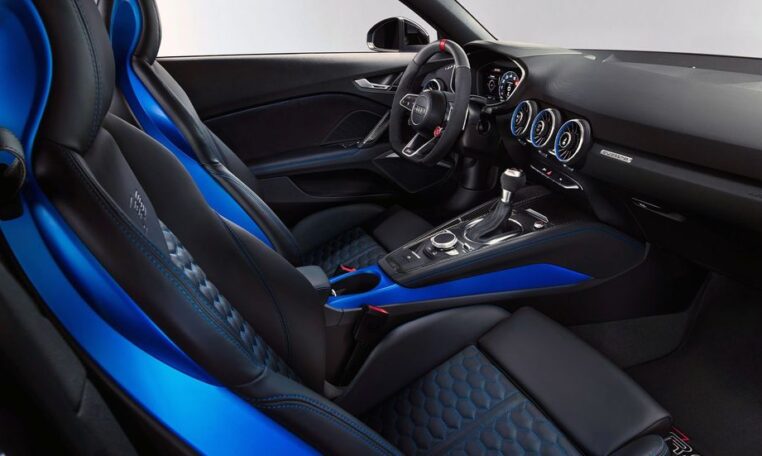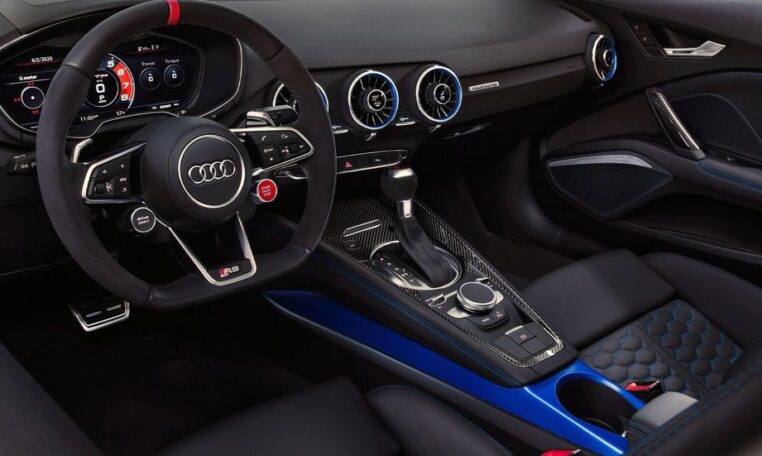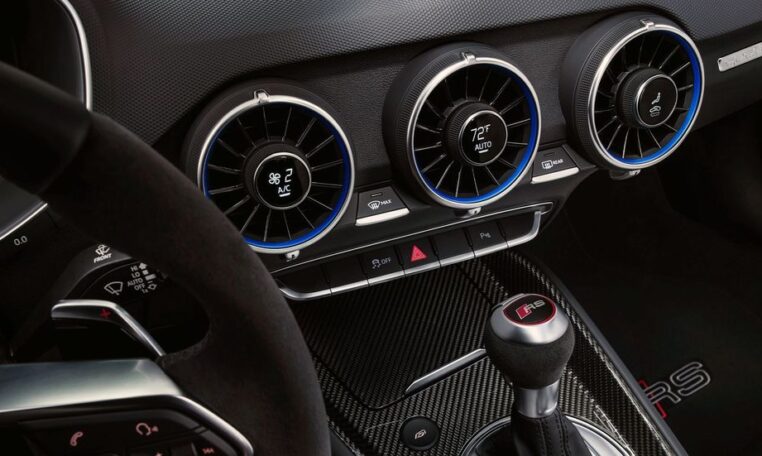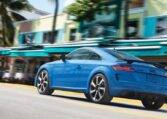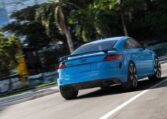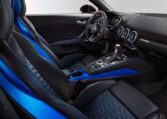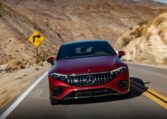NEW 2022 Audi TT RS Coupe
Parked alongside killer sports cars such as the Chevrolet Corvette and the Porsche 718 Cayman, the 2022 Audi TT RS looks appropriately aggressive and expensive. Its 394-hp turbocharged five-cylinder has the punch it needs to compete, too. Inside, occupants are treated to a tech-forward cabin with Audi’s signature flawless build quality, but the TT RS lacks a luxury flavor that buyers of the Jaguar F-Type or that BMW Z4 will enjoy. The Audi’s handling is also less charming than other sports cars in this class. That’s not to say the TT RS isn’t fun to drive—it is—but its effortlessness lacks the drama we crave when driving near a car’s limit, and there’s not the same level of agility that makes cars like the Cayman really sing.
Engine, Transmission, and Performance
The TT RS’s 394-hp turbocharged 2.5-liter five-cylinder engine is unusual and alluring, and it makes a happy triumvirate with the standard Quattro all-wheel drive and snappy seven-speed dual-clutch automatic transmission. Passing power is astonishing: The seven-speed is more than willing to downshift as soon as you demand extra power, and the TT RS surges forward with such immediacy and force that you may think you’ve been sucked into a wormhole. Careful modulation of the throttle pedal transforms this athlete into a comfortable cruiser. When equipped with its standard adaptive dampers, the TT RS feels stable and planted on the road—even when that road turns wickedly twisty—so even relatively inexperienced drivers can feel confident tossing it through corners at supralegal speeds. The version we tested felt rock solid all the way up to its limit, but that limit is significantly lower than those of the Corvette and Cayman. While an edgier suspension—sans adaptive dampers—is available, the setup makes it noticeably more difficult to feel when the TT RS is about to reach its cornering limits. Unless you plan on spending lots of time on a racetrack, we suggest passing on the Dynamic Plus package.
Fuel Economy and Real-World MPG
Don’t let the uncompromising performance fool you; the TT RS’s turbo five-cylinder is quite efficient. The EPA estimates the 2022 model will earn 20 mpg in the city or 30 mpg on the highway. The version we evaluated on our 75-mph highway fuel-economy route, which is part of our extensive testing regimen, and we saw 31 mpg in the real world.
Interior, Comfort , and Cargo
Inside, leather seats with diamond stitching are standard, as is the eye-catching, well-integrated aluminum trim of the cabin’s design. However, absent from the car’s hefty price tag are ventilated front seats, a power-adjustable steering wheel, and a memory function for the driver and front-passenger seats. In our experience, the TT’s rear seats are all but unusable—except as a place to throw gym bags or a briefcase. With the back row folded (as it should always rightly be—no kind person would subject a friend to the RS’s back seat), we stuffed nine carry-on suitcases behind the front seats, making the TT RS by far the most useful vehicle in this class. As with many cars of this sort, unwieldy cargo will find no quarter—the cargo compartment is relatively large but not very tall, and the liftback rear opening is long but narrow.
Infotainment and Connectivity
Working with limited space, the TT RS’s infotainment screen is not in the center of the dashboard but in the space traditionally occupied by the gauge cluster. This arrangement is attractive and easy to use, and, as in other Audis, is controlled by a rotary knob mounted on the center console. In-dash navigation as well as Apple CarPlay, Android Auto, a 12-speaker Bang & Olufsen stereo, and an onboard Wi-Fi hotspot are all standard.
Safety and Driver-Assistance Features
The TT RS hasn’t been crash-tested by either U.S. ratings agency—not an unusual omission for cars in this class. There’s not much in the way of available driver-assistance tech for the TT RS, either. Still, this is a car that emphasizes driving, not mindless cruising. The omissions don’t bother us, but some shoppers may disagree.
Browse through the vast selection of vehicles that have recently been added to our inventory.
